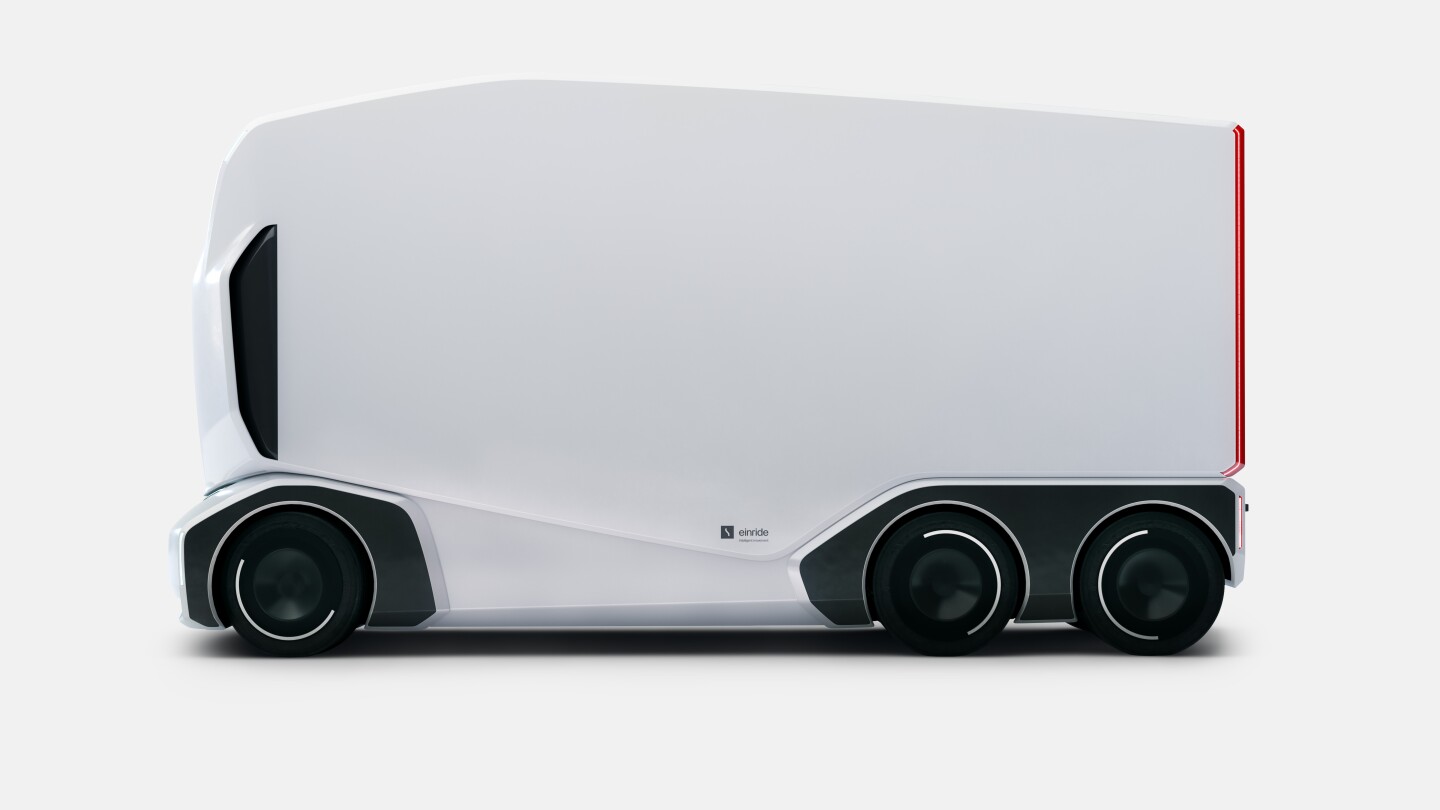Last year, a cabless, autonomous electric truck prototype called the T-pod took to public roads for the first time. Now its maker, Sweden's Einride, has unveiled the latest generation of the vehicle, as it drives itself toward commercial availability.
The first thing you'll note about the new Pod, and the prototypes before it, is that it doesn't have a driver's cab. The battery-electric vehicle has been designed to operate autonomously, and the latest generation is expected to travel between 130 and 180 km (80-110 mi) per charge and haul up to 18 pallets in back, to a maximum cargo weight of 16 tonnes.
It's undergone a design refresh too, including aerodynamic refinements that won't impact cargo hauling capacities, integrated lighting to the front, and rear lights that run up the whole height of the cargo bay.
The self-driving setup is a mix of a proprietary freight management platform, electric cargo hauling and autonomous technology. But the company says that as the Pod doesn't really fit neatly into any of the current autonomous vehicle levels, it came up with its own designation for driverless, electric freight vehicles – Autonomous Electric Transport (AET).
Level 1 is considered a good fit for fully autonomous freight transport on closed facilities with predetermined routes. Level 2 adds short distances on public roads to the mix, while the third level takes in rural settings too. Level 4 has all that cooked in, plus it puts the trucks on freeways and other major roads at speeds of up to 85 km/h (over 52 mph). AET 1 and 2 are being made available for reservation now, with shipping of Pods expected to start next year. AET 3 and 4 are up for pre-order, and shipping is expected to happen sometime around 2022-2023. There is an AET 5 level too, though no details on that have been released at this time.

Launch partner Lidl Sweden has signed up for multiple Pods, and Swedish plant-based dairy alternatives producer Oatly has also joined up as a launch partner, along with Bridgestone and battery manufacturer Northvolt.
A reservation fee of US$10,000 is what it will take for businesses to join up, with the monthly operational fee for AET 1 set at $18,000, AET 2 at $19k, AET 3 at $20k and AET 4 at $22.5k. For that money, businesses will get access to Einride's freight mobility platform to coordinate and operate the Pods, overseen by company-certified remote operators.
"We started this journey in 2016 with a dream to build a better future through technology," said company CEO, Robert Falck. "Years of hard work and dedication from the whole team at Einride have made us the leader in AET, and today we are taking the next step to bring our solutions to the world and ramp up the transition to a more sustainable future of transport."
On October 15, the company will hit the racetrack in the UK to demonstrate its technology at speed.
Source: Einride








